- +4 0787.863.391
- office@soimul.eu
-
Cont Personal
Vizitator
Informatii
- Grupul: Vizitatori
- Balanta: Lei0.00
Magazin
- Valuta
- Coşul de cumpărături este gol
A Dracula Tour, leaving from Bucharest, intended to adventure seekers, Transylvanian lovers and Dracula enthusiasts. Dracula, according to the Irish writer Bram Stoker's vision, was a vicious vampire with supernatural powers, red reflections in the eyes, and very long canines.
Vlad Tepes's history remains covered by mystery and legend, and the truth is that no one knows where the legend ends to leave the place to history. The word "Dracula" wasn’t something that Bram Stoker made up for his book; Vlad III actually preferred to be called like that. His father, Vlad II, had been a member of a secret organization known as the Order of the Dragon. He had been so proud of his membership that he had added the word “Dracul”, to his name, the Romanian for “Dragon.”
We invite you to spend 8 unforgettable days in Romania. You will discover wonderful people, places of breathtaking landscapes and the legend of the famous DRACULA.
The tour includes the most important historical places related to Vlad Tepes (the Impaler) such as:
- Sighisoara - Dracula's birth place;
- The legendary Bran Castle;
- The ruins of the Poienari Fortress – Dracula's refugee place;
- Snagov Monastery where, Vlad was buried after his assassination.
Wishing to make you feel better during your vacation with us, our professional team will offer you high quality services.
Day 1 (Wednesday) ~ Bucharest City - Targoviste City - Poenari Fortress - Vidraru Dam (250 km)
Departure from Bucharest at 7.15
Breakfast in Targoviste / Lunch and dinner on the shore of Lake Vidraru
Visiting: Chindia Tower and the Royal Court of Targoviste, Poenari Fortress, Vidraru Dam and Electricity Man
Chindia Tower (Targoviste City)
It has been the emblem of Targoviste City for centuries. It was most probably built in the second half of the 15th century, during the reign of Vlad the Impaler. The Chindia Tower was used as a point of observation and guard for the yard and its surrounding area. Apart from its defensive role, in the 16th and 17th centuries the tower also served as prison of the princely court.
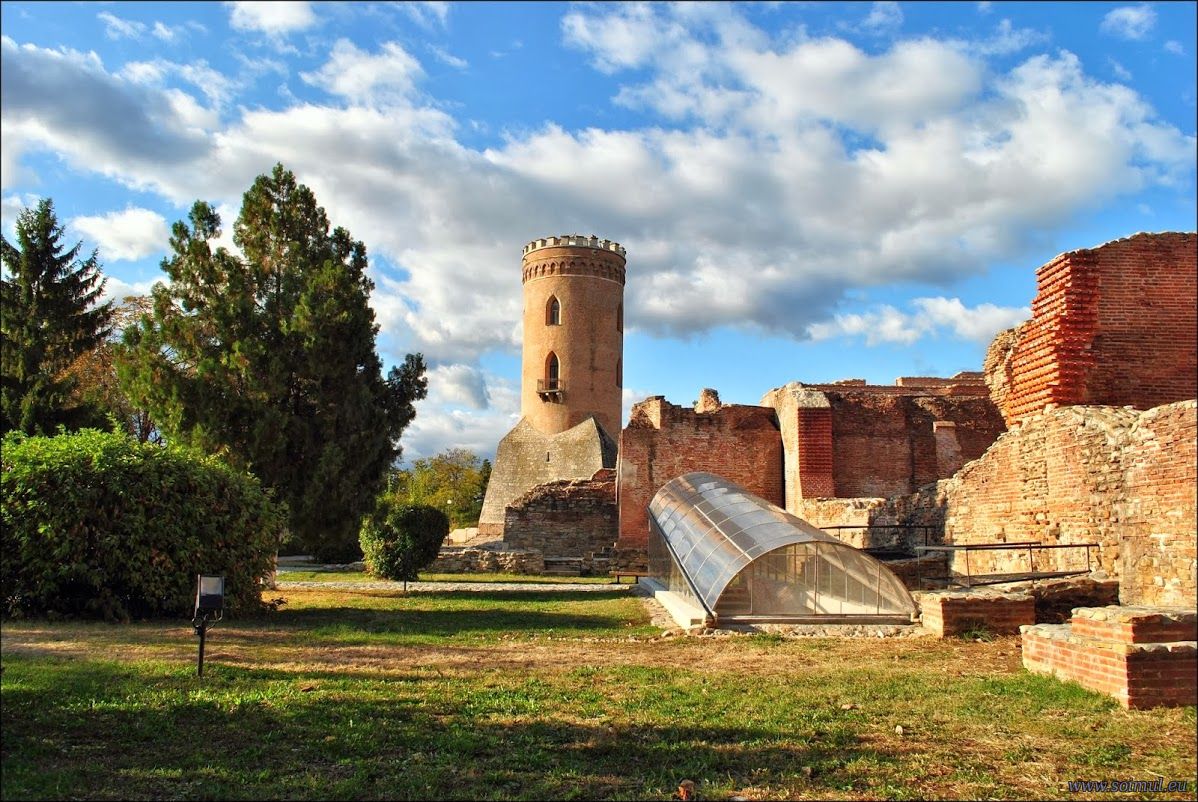
Royal Court (Targoviste)
It is a complex of historical monuments and is one of the most important architectural ensembles in Wallachia, with a great historical and artistic value. The Princely Residence for three centuries, the Princely Court offers the opportunity to know a chapter of the history and middle-age art of Romania, being the residence of 33 princes, starting with Mircea the Elder and ending with Constantin Brancoveanu. The main monument of the museum complex is The Great Princely Church built in 1584 by the ruler Petru Cercel which has kept the brancovenian painting since 1698.
Poenari Fortress (850 m - Fagaras Mountains)
Located in the Arges Gorge, the Poenari Fortress was built by Negru Voda in the 14th century, for observation and defense. A lot of legends related to the prince Vlad the Impaler are connected to this forttress. It was first mentioned in documents of 1453 and is supposed to have been the place of refuge of Vlad the Impaler in front of the Turks. The fortress has got an elongated shape with 5 towers of defense and extremely thick walls. Over time, its destruction was brought about by a Turkish siege in 1462 and by an earthquake that crashed a northern wall in 1915. Due to its strategic position at the top of a cliff, it was also used as a Dungeon or treasure. To reach the fortress, we walk through the forest, climbing 1480 steps.
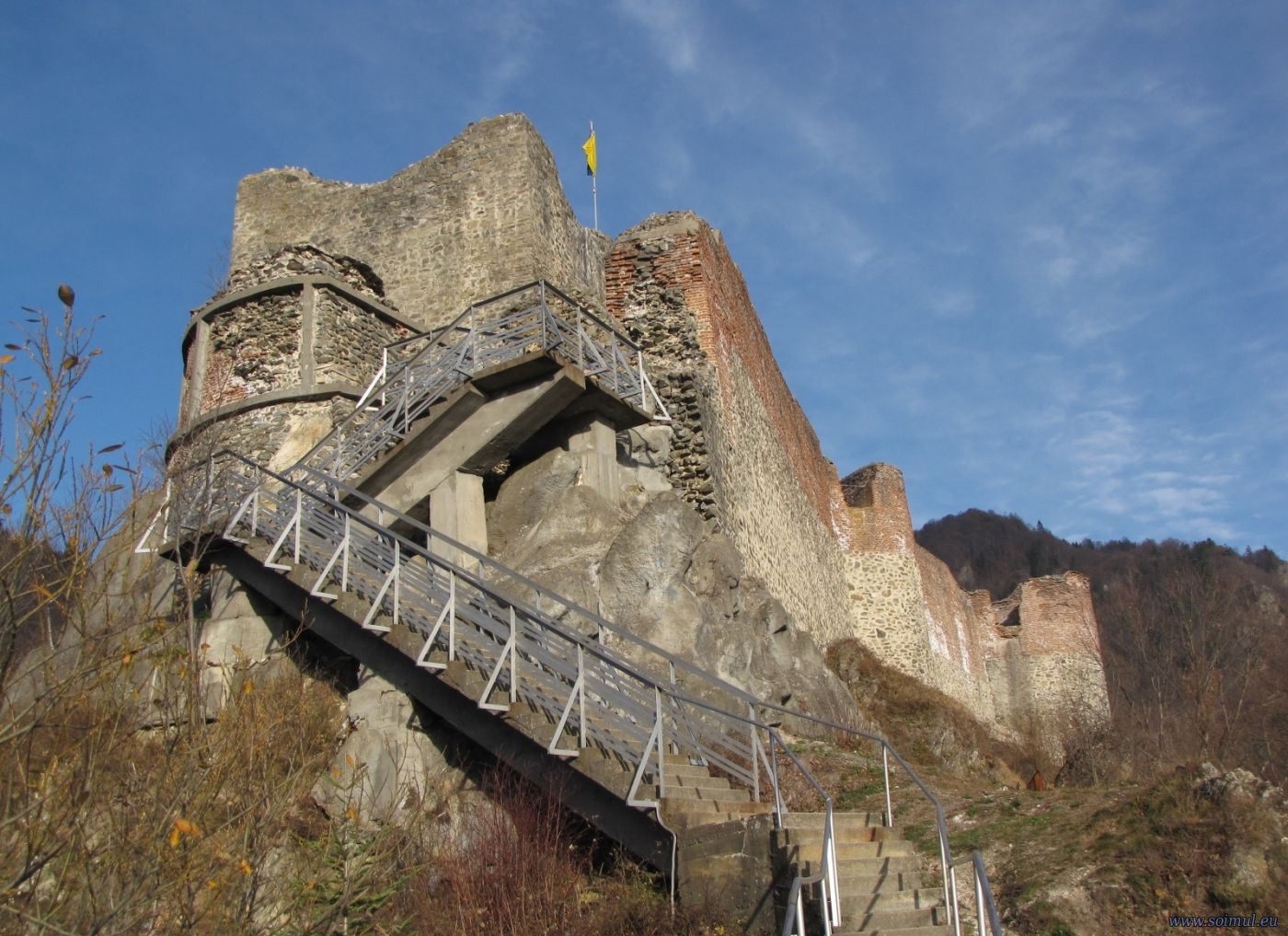
Vidraru Dam (830 m - Fagaras Mountains)
Lake Vidraru is an accumulation lake created in 1965 by the Vidraru Dam in Arges County, on the Argeş River, for the production of electricity, irrigation and flood prevention. Tthe lake and adjacent facilities are also used for recreation, tourism and sports.
The total surface of the lake is 893 ha, the length of 10,3 km, the maximum width of 2,2 km in the Valea Lupului - Călugăriţa Valley and a 28 km circumference.
The maximum water depth is 155 m near the 166 m high curved dam, 307 meters long. The volume of water is 465 million m³. The normal retention level is 830,00 meters above sea level.
The construction of the Vidraru Dam lasted five and a half years starting in 1960. For this achievement, 42 km of underground tunnel were needed, 1.768.000 m3 of rock were excavated, of which about 1 million underground, 930.000 m3 of concrete were cast, of which 400.000 m3 underground and also, 6300 tons of electromechanical equipment were installed.
At the time of completion, this was measured at a height of about 8th in Europe and the 20th in the world.

The Electricity Man (870 m - Fagaras Mountains)
In the eastern part of the Vidraru Dam, on Mount Pleasha, there is the statue of Prometheus with lightning in the hands - a symbol of electricity. The statue was made in 1965 by the sculptor Constantin Popovici. The god of fire and then the hero who steals the fire from Hefaistos' ironwork and brings it to the people (in Greek mythology), Prometheus is a symbol of sacrifice for the good of mankind. In order to climb to the Electricity Man, one should walk a 100-150-foot easy route, and visiting it is free of charge. From the platform you can admire the beauty of the surroundings.
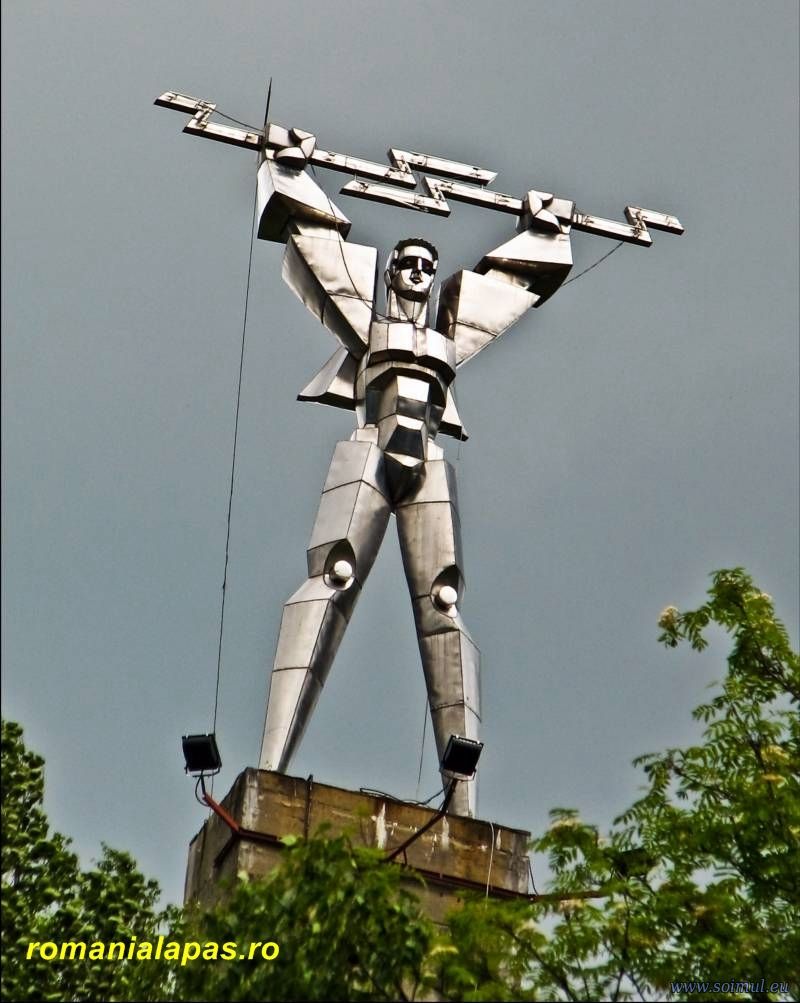
Day 2 (Thursday) ~ Adventure Park - Capra Waterfall - Lake Balea - Balea Waterfall - Albota Trout (100 Km)
Departure at 10.30
Breakfast on the shore of Lake Vidraru / Lunch on the shore of Lake Balea / Dinner at Albota Trout
Visit: Adventure Park, Capra Waterfall, Balea Lake (optional climbing on the ridge), Balea Cascada (cableway overflight), Albota Trout.
Adventure Park (1285 m - Fagaras Mountains)
The largest adventure park in the Fagaras Mountains, with a surface of 5000 square meters for all age groups.
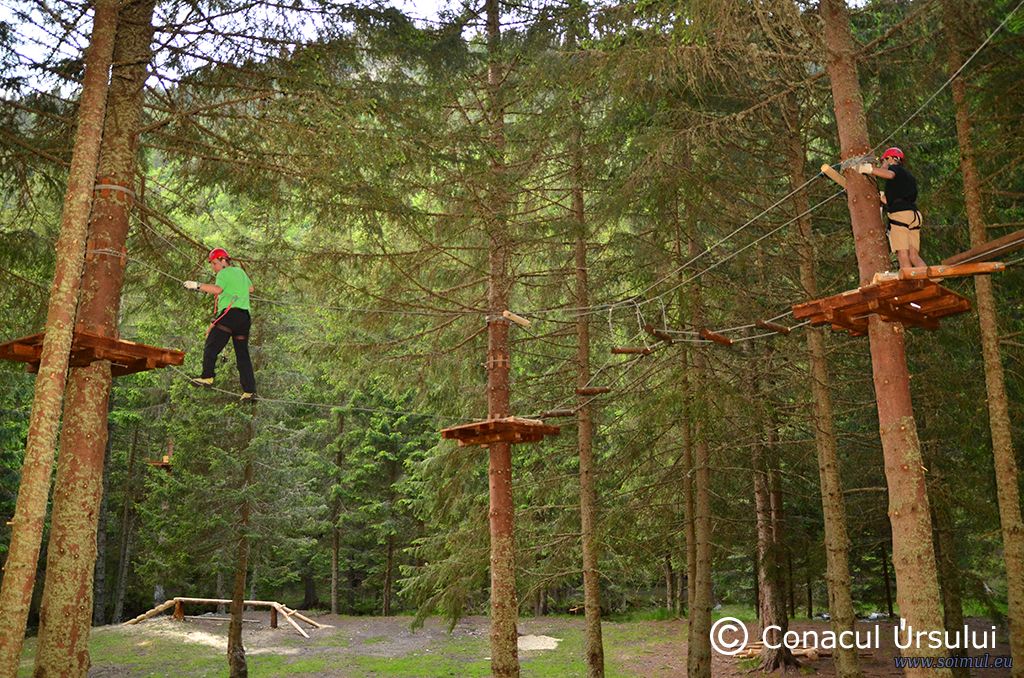
The Capra Waterfall (1690 m - Fagaras Mountains)
The Capra Waterfall, or the Waterfall of Iezer, is located on the southern slope of the Fagaras Mountains at an altitude of 1690 m. Water falls from Capra Lake (2241 m). It has a drop of more than 40 m.
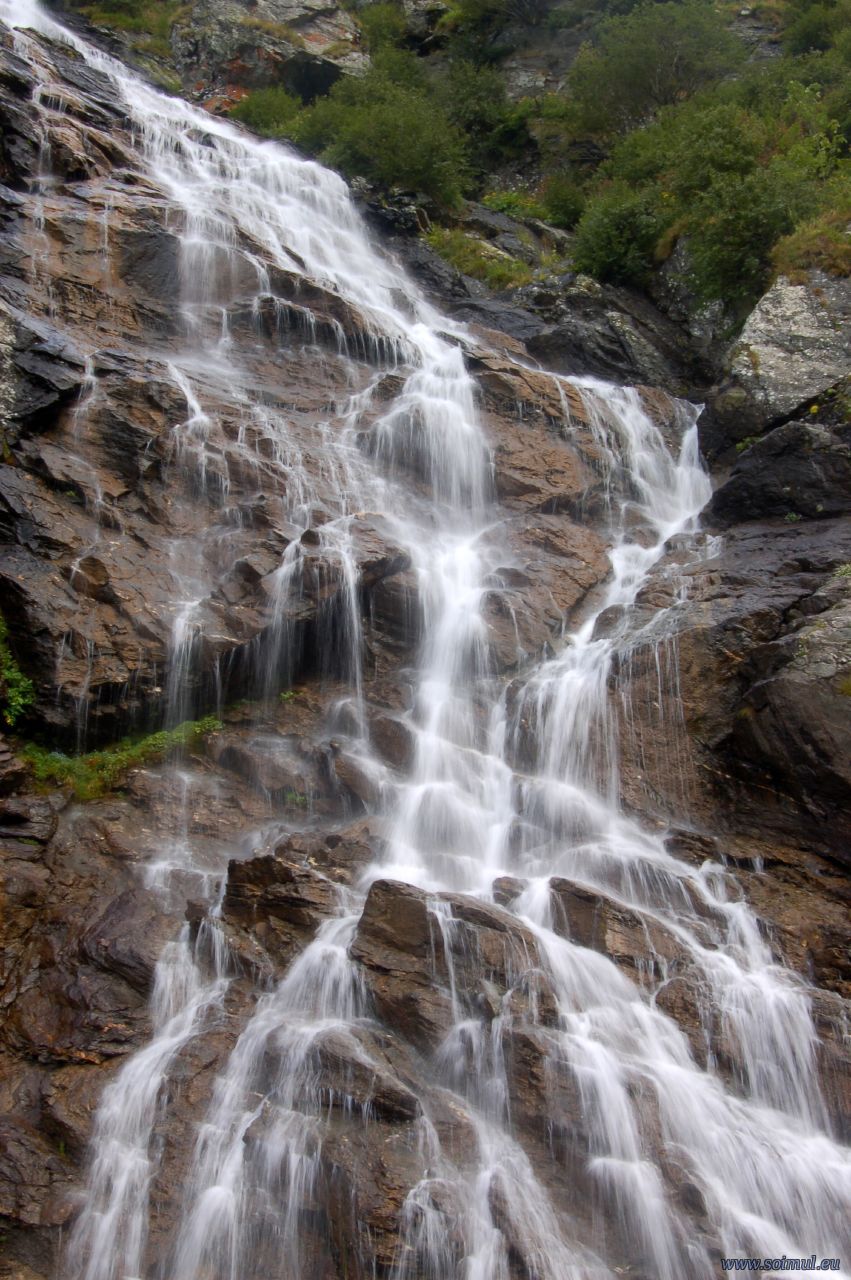
Lake Balea (2040 m - Fagaras Mountains)
It is a glacier lake (formed in a glacier circus) situated at an altitude of 2040 m, in the Fagaras Mountains, Sibiu County. The lake's dimensions are: 360 m in length, 46508 m2 and 11.35 m deep. In 1932 the Balea dam and an area of about 180 ha around the lake were declared a scientific reserve. In 2006, the first ice hotel in Eastern Europe was built in the shape of a 16-seat igloo near Balea Lake.
Optionally, for those who want, a trip can be made on the crest of the Fagaras Mountains. The duration of the trip is one hour / one hour and a half. Route difficulty level - medium.
Waterfall Balea (1300 m - Fagaras Mountains)
Also known as the Urlatoarea Balei, it is situated in the Făgăraş Mountains between the peaks Moldoveanu and Negoiu, at over 1200 m altitude. It is the largest stepping waterfall in Romania, with a 60 m drop, and marks the inferior stage of the Bâlea glacier circle.
The distance between Balea Lake and Balea Waterfall will be covered by a cable car, overflowing the waterfall.
Albota Trout (539 m - Fagaras Mountains)
Albota is the trout farm at the foot of the Fagaras Mountains, in the Arpasel Valley surrounded by the Natural Reserve and the mountain peaks Albota and Buteanu (2507 m).
Day 3 (Friday) ~ Avrig City - Calnic City - Deva City (300 km)
Departure at 10.30
Breakfast Trout Albota / Lunch and dinner Deva City
Visit: Brukenthal Palace, Calnic Fortress, Museum of Daco-Roman Civilization (Deva City), Devei Fortress and Hunedoara Castle (Huniazilor)
Brukenthal Palace (400 m)
The palace is built in the Baroque style in the 9th century and is the dominant building of a summer residence. It is situated on a 12 meter terrace above the Olt Valley, in Avrig's highest point. The ensemble comprises a main three-wing building. Brukenthal used as a source of inspiration for the planning of his residence - but also of the palace - the assemblages of royal castles in Schönbrunn and Laxenburg. In particular, the palace reminds of its position on the top of the Glorietta hill in the park of the Viennese Schönbrunn Palace.
Calnic Fortress (330 m)
Originally built in the middle of the 1200s as a residence for the Chyl de Kelling Slasso, who gave the village's name, the fortress of Câlnic was designed with a massive tower-dungeon, used as a dwelling, surrounded by walls that formed an oval enclosure with a south tower and a gate tower on the north side. The defense system was completed by a ditch with water surrounding the fortress.
Noble residence until 1430, the fortress was sold to the peasants of Câlnic, who in the first half of the sixteenth century began to erect a new belt of walls, strengthen the gate tower, and in the inner courtyard raised the chapel. Also in the inner courtyard, glued to the wall, a warehouse for supplies was built. Completed these massive expansion and reinforcement works, the fortress was given the appearance of today.
Museum of Daco-Roman Civilization (200 m - Deva City)
The headquarters of the Dacian and Roman Civilization Museum are located in Magna Curia Palace, or Bethlen Castle, which is the oldest historic preserved building in Deva. The museum hosts collections of archeology from prehistoric, dacian, early Roman, pre-medieval and early medieval periods, numismatic collections, decorative art collections, ethnography (folk costumes, tools, Botissa ceramics, glass icons), collections of natural sciences, Paleontology, etc.) and a library of about 40000 volumes.
Cetatea Devei (378 m - with cable car - Deva City)
It is considered one of the most important medieval fortifications in Transylvania. It was ruled by the princes, princes, conjures, and dukes. It was offered as gift, sold or bombed. Everyone left something behind him. One more defense wall, one room, one ballroom, or even the whole one-storey fortress. They wanted it not only to be used for defenses and occasional meetings, but to serve as dwelling. Not an austere, but a luxury one. Today, its ruins are visible from the distance, thanks to its strategic location, on a hilltop dominating the Mures Valley and Romania's main road to the central and western Europe. The fortress was built in the thirteenth century, but its traces are much older: there are discoveries dating from the Neolithic or the Bronze Age. The first documentary mentioning the Fortress of Deva dates back to 1269.
Hunedoara Castle (2120 m)
Also known as the Corvinus or Hunyad Castle, it is the medieval fortress of Hunedoara - one of the most important monuments of Gothic architecture in Romania and it is considered one of the most beautiful castles in the world. Almost every room of the Castle has a legend - one of them says that Vlad the Impaler was imprisoned for seven years in the basement of the fortress and that he would have frightened the guards through his cruelty. However, historians say this account is false.
Day 4 (Saturday) ~ Sibiu City - Medias City - Sighisoara City (230 km)
Departure at 10.00
Breakfast in Deva City / Lunch in Sibiu City / Dinner in Sighisoara City
Visit: Sibiu City, Slimnic Fortress, Medias Medieval City, Sighisoara City
Sibiu City (415 m - 431 m)
A medieval town with a history of 900 years, Sibiu has preserved many testimonies of the past, which today is of particular interest to visitors. The walls of the old defense belts, the towers named after the guilds of Sibiu, the central squares with their history, the old buildings filled with history - many of them in the past housed by Sibiu's personalities, the city's museums and everything that is the cultural life of a breathtaking historic city, modernity and Europeanism, creates in Sibiu an asset that inevitably attracts visitors of all ages. The history of a renowned medieval center, a city of prizes in innovation, technology, education and culture, the dynamism of a city geared towards Europe and its values, offer the diversity that tourists look for in the locations they visit.
Slimnic Fortress (430 m)
In the sixteenth century, Sibiu and Medias were two major cities in southern Transylvania, and the connection between the two was always threatened by enemy attacks. Thus, in the middle of the century, in several stages, the Slimnic fortress was built on the road between Sibiu and Medias. This was a vast construction of military architecture with defense towers.
The fortress is set on a hill above Slimnic and its high and red ruins (due to the brick) can be seen from afar. Inside the fortress it was also a small Gothic chapel.
Medias Medieval City (296 m)
It has a history of more than 700 years, being mentioned for the first time in a historical document in 1267, therefore it is one of the oldest cities of Romania. Medias is a beautiful and well preserved city. There were 17 towers and bastions and high walls over 7 meters.
Sighisoara City (380 m)
Sighisoara, "Medieval Jewelery of Romania" awaits its visitors to reveal its mystery in the walls aged in the hundreds of years of its existence.
In the broad valley of the Tirnava Mare, the Hill of the Citadel rises, where the city descends from, surrounded by higher hills. These hills with forests, every season in differend colors, from snow white to the rust of autumn leaves, give Sighisoara a special charm that invites those who pass by here to stop and enjoy the view, quietness and the beauty of the places, mostly those who love hiking, outdoor sports or hunting.
The name of Sighisoara is associated with the one of Vlad Dracul's son, the famous Vlad the Impaler, called Dracula. It is assumed that Vlad Ţepeş was born in Sighişoara, in the former house of the guard, where his father was housed in his wandering years, called today "Vlad Dracul".
Today, the old Cetate - with serenity towers and gloomy but hospitable walls - is considered to be the only medieval fortress inhabited entirely by Europe.
The fortress of Sighisoara was built in the 12th century and rebuilt in the 14th century. Nowadays, only 9 towers and part of the old protective wall have been preserved.
Day 5 (Sunday) ~ Viscri Village - Rupea City - Feldioara City - Brasov City (140 km)
Departure at 11.00
Breakfast in Sighisoara City / Lunch in Rupea City / Dinner in Brasov City
Visiting: Viscri Village, Rupea Fortress, Feldioara Fortress and Brasov City
Village Viscri (745 m)
The village, where everything is authentic, has been on the world map of the traditional villages in the world, being part of the UNESCO heritage.
Documents show that the village of Viscri has always been a free village, never part of a noble property.
Prince Charles bought a house here in 1996 and spoke in many interviews about the beauties of the village in Transylvania.
The village of Viscri houses one of the most spectacular fortified Saxon churches, being one of the six UNESCO World Heritage.
Rupea Fortress (2120 m)
The Rupea fortress, as it appears to us today, covers an area of nearly 11 hectares - with walls, towers and inner courtyards. Due to its dominant position, it is a remarkable presence from a long distance and represents a medieval creation, a major architectural complex, with five-year levels of operation.
The entrance of the fortress in history was marked by a struggle between rebels from the Saxon elite against the people of Transylvania (1324).
Due to the fortifications and wisdom of her households, Rupea was not attacked, conquered or robbed in all these centuries. The fortress was gradually abandoned, from the first half of the eighteenth century, to the political guarantee guaranteed by the Habsburg Empire. One temporary passage to the fortress was also recorded in 1789, to the panic caused by a possible Turkish aggression. That was the last event in which the fortress was called for defense.
Feldioara Fortress (865 m)
It was built in the 13th century and is the most important fortification built by the Teutonic knights in Transylvania.
Archaeological discoveries have revealed that the hill of the fortress was inhabited thousands of years ago, surprisingly well-preserved artefacts from neolithic, Geto-Dacian and medieval periods were brought to light.
The fortress has four towers, the four cardinal points, an enclosure wall, and the walls that mark the old chapel of the time when there was a Cistercian Monastery. On the north side can be seen the Teuton wall, but also a fountain.
Brasov City (625 m)
One of the largest cities in Romania, situated in the middle of the country, 170 km from the capital Bucharest, Brasov is a green city, surrounded by mountains, the nature reserve Tampa being in the middle of the city. Brasov is a city that gives you many reasons to love it; culture and education have been a place in the life of the people of Brasov since early and continue to be represented and promoted by various institutions. Braşov means people and events.
Day 6 (Monday) ~ Rasnov City - Bran City - Dambovicioara Cave - Runcu Stone Pension (200 km)
Departure at 10.30
Breakfast in Brasov City / Lunch in Bran City / Dinner at Runcu Stone Pension
Visit: Rasnov Fortress, Valea Cetatii Cave, Bran Castle, Dambovicioara Cave and Dambovicioarei Gorges
Rasnov Fortress (676 m)
The medieval fortress is supposed to have been built between 1211-1225, as long as the Teutonic rule continued in Barsa Land, and after the Crusaders left, the wooden fortress was rebuilt or converted into a stone. The fortress, set on a steep cliff, is accessible only on the eastern side. Thus, its architecture was adapted to the relief, fortification aiming at the efficiency of hill defense, without any architectural claims of beauty. Impressive by the site, also highlighted by the deforested hill, the fortress had raised walls at an average height of 5 m, a maximum of 8 bastions and a strong fortified entrance. Due to the numerous military invasions, the fortress was the "second hearth of Râşnov", the inhabitants of the fair always respecting the same savior scenario: the refuge in the fortress and then the restoration of the settlement. rooms) that served as a shelter and lounger during the siege.
Cave Valea Cetatii (790 m)
The Fundata Cave of Valea Cetatii Nature Reserve is an exceptional tourist attraction. The balls that mirror enigmatic shapes perfectly shaped by water and air surround an imposing cathedral room that, with its over 30,000 cubic meters, opens to the eye a voluminous story ceiling with white limestone arches as rarely seen in the world. Fitted with the latest technology, the cave offers a journey and illumination that also makes a claustrofob forget the walls that surround it and feel in a crystal palace.
Bran Castle (1000 m)
Initially, Bran Castle was a military defense fortress, based on the form of an irregular quadrilateral. Over time, the fortress underwent many modifications, including the addition of the southern tower in 1622, the construction of a rectangular tower on the east, and between 1883 and 1886, the roof was tiled. The fortress was transformed into a royal residence in 1920, with Queen Maria's ownership, and between 1920 and 1929 the most important restoration works were carried out. At present, the collections of furniture, suits, arms and armor are exhibited in the four-story museum, and the Bran Bran also includes the Royal Park with its two lakes, the Tea House, the Administrator's House and the Princess's House Ileana. Find the only one in all of Transylvania that matches the description of Dracula's castle in Bram Stoker's view, the whole world refers to it as Dracula's Castle.
Cave Dambovicioarei (2120 m)
The cave emerged as a result of the action of the waters crossing the Piatra Craiului massif, but also the Făgăraş and Leaota Mountains. In their course, they formed deep and narrow valleys, leading to the appearance of a special landscape, appreciated by the tourists visiting the area. The underground pit consists of a 250-meter-long gallery with an ascending route.
Entrance to the cave offers access to two galleries about 20 meters each. In addition, stalactites and stalactites can be seen, which have formed impressive columns. Further, the cave breaks into two galleries: the first is the forms that water created as a result of leakage on the walls. The type and nature of rocks are not characteristic of large caves, tourists can admire various geological formations. In the big gallery there are forms that mimic various aspects of nature: the shape of an elephant, the face of a devil, the eagle's wing, two angel wings.
The cave dates back to 1579, when the locals used it as a hiding place for the invaders. Later, it was inhabited by different characters.
The Gorges of Dambovicioarei (860 m)
They have a key length of 2 km, are situated in the limestone mountainous area of "Piatra Craiului Mountains", on the route "Rucăr-Bran".
Dâmbovicioarei Keys have a striking appearance and are part of a series of at least 20 keys located in the Dâmboviţa catchment area. Dâmbovicioara dug in sedimentary rock formations, limestone, and sandstone, conglomerates a true 8 km long canyon, which in some parts of the valley has vertical walls exceeding 200 m high.
River waters through erosion have created bizarre shapes of towers, or they grow sharply, with underground karst voids, so over 50 caves can be found in this area.
Runcu Stone Pension (840 m)
Situated in the Bucegi Mountains, at the foot of Leaote, on the top of Runcu's highest hill, Runcu Stone Guest House is completely isolated from the urban bustle, surrounded by meadows and forests, with an unrivaled view.
Day 7 (Tuesday) ~ Snagov City - Mogosoaia City - Bucharest City (200 km)
Departure at 10.30
Breakfast at Runcu Stone Pension / Lunch in Mogosoaia City / Dinner in Bucharest City
Visit: Snagov Island, Snagov Monastery, Mogosoaia Palace, Bucharest City
Snagov Island (120 m)
It is a place full of history, being inhabited for thousands of years. The island of Snagov is linked to the name of the prince Vlad Tepes, as the voivode is presumably buried somewhere on the island. On the island you can see the Monastery of Snagov, a monastery built in 1521 by Neagoe Basarab exactly on the site of the old church during Vlad Tepes.
Snagov Monastery ()
It became famous especially after the funeral of Vlad the Impaler. Legends say that after the death of the prince, in 1476, the monks of the monastery would have found and hid his body, then buried him Christian after the fighting for power had ended. The funeral would have happened in secret and without any fast, because of the new ruler installed by the Turks.
Mogosoaia Palace ()
The monumental historical, cultural, tourist and recreational complex of Mogoşoaia is one of the most sought after and attractive places due to the valuable architectural heritage located in a picturesque natural setting in the immediate vicinity of Bucharest. The complex contains the actual building, courtyard with the watchtower, the kitchen, the guest house, the glacier and the Bibescu family's cave, as well as the "St. George" church near the courtyard walls. The palace was devastated by the Ottomans during the Russian-Turkish war of 1768-1774, because the great ban Nicolae Brâncoveanu kept the Russians in the conflict. A new destruction of the palace occurred on the occasion of the 1821 revolution when Brâncoveanu's last survivor, Grigore Brâncoveanu, fled to Brasov and the building was occupied by pandas.
Bucharest City (58 m - 90 m)
- Old Yard
The first domed courtyard in Bucharest, built by Mircea the Elder, was the place where, for hundreds of years, the boyars of time were gathering, stating the history of a country that was still under Ottoman danger. The Old Court was, on the other hand, the place where the first Romanian writings were to appear, in which the national spirit regained its originality expressed in art and culture. In the fifteenth century, Vlad the Impaler, the prince of Wallachia, strengthened the city and raised it to the rank of royal residence, alternating with that of Targoviste. At present, the old Voivodal Palace still has a cellar with the cellars, the ruins of the former "Turkish Baths" and a few walls that mark the outline of the former Voivodal Palace. The ruins of the Voivodal Palace have become a protected archaeological site, and a museum, the Curtea Veche Museum, has been set up.
- National Village Museum
On the shores of Lake Herastrau, right in the middle of the Romanian capital, the visitor everywhere has the joy of meeting a real "village" with monuments, artefacts and representative buildings from important ethnographic areas that have regained a second life at the National Village Museum "Dimitrie Gusti ". According to the criterion of authenticity, of observing the local construction traditions, in force today, the reconstruction of the buildings in the museum worked, under the close supervision of the specialists, craftsmen brought from the villages of origin of the monuments. Through his exhibition of folk architecture and technique, and implicitly through the specific inventory of ethnographic objects, as well as through the new organizational museographic concept, the museum manages to present to the public the image of a Romanian village - synthesis, its originality, representativeness, unity and diversity .
- Parliament House
From Bucharest it measures 270 m at 240 m, 86 m high, and 92 m underground. It has 9 levels on the surface and another 9 underground. According to the World Records Academy, the Parliament Palace is the second largest administrative building for civilian use as the world's most expensive administrative building in the world and the world's toughest building. The hill on which the Palace of Parliament today is generally a creation of nature, having an initial height of 18 m, but the part from the Liberty Avenue is artificially elevated.
Day 8 (Wednesday) ~ Bucharest City (100 km)
Departure at 10.30
Breakfast in Bucharest City / Lunch in Bucharest City
Visit: Bucharest City and transfer Airport Henry Coanda - Bucharest
+4 0787.863.391
office@soimul.eu Str. Valea Lunga 47, Bucuresti - Romania